Our Blog - Le Conquet, France
The Breton name for Le Conquet is Konk-Leon, coming from "Konk" which means bay, harbor, or cove, and "Leon", which is the historical name of this area. Like much of this area, there have been villages here since antiquity, with a Roman road passing nearby. Around 875, the Normans invaded Le Conquet, landing some troops and looting the surrounding area. In 1207, supporters of John Lackland built a castle near Le Conquet and seized the city and the port, which they made a place of arms. The English were driven out in 1218 by Pierre de Dreux who razed the castle and the fortress they had built. It is another town who's population has been gradually increasing, up to just under 3,000 people.
Our morning walk brought us to the Presqu'île Kermorvan, just across the water from the town of Le Conquet. A defense system was built here in the 18th century) that combines coastal batteries, entrenchments, and redoubts (enclosed fortifications constructed outside a larger fort). We parked right at the Redoute des Blancs-Sablons and then headed down to the beach.
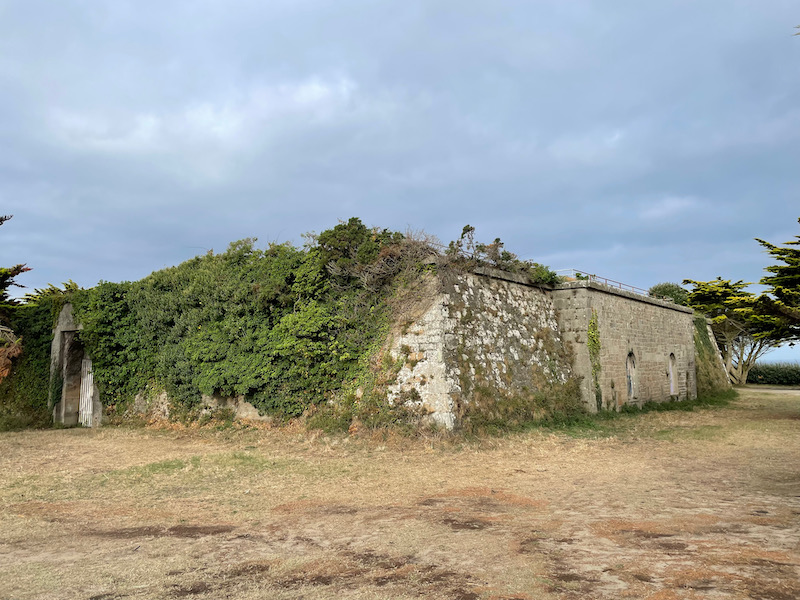
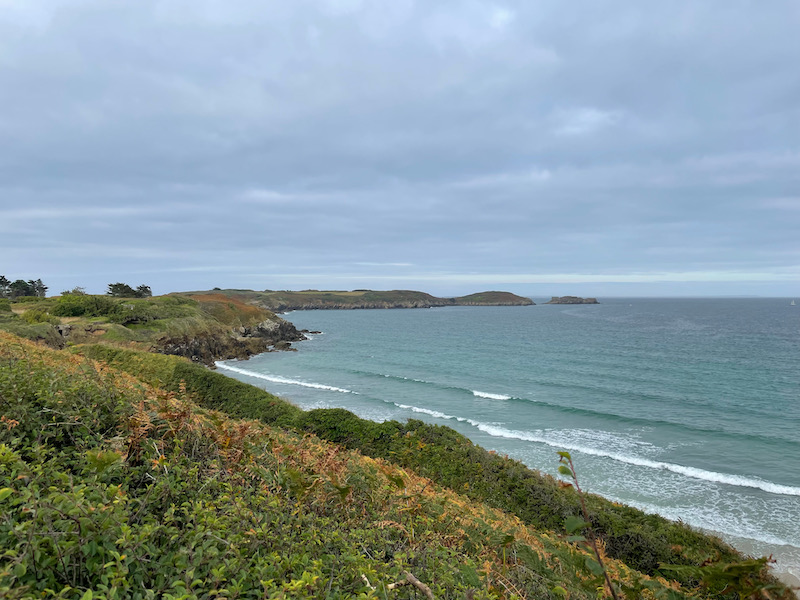
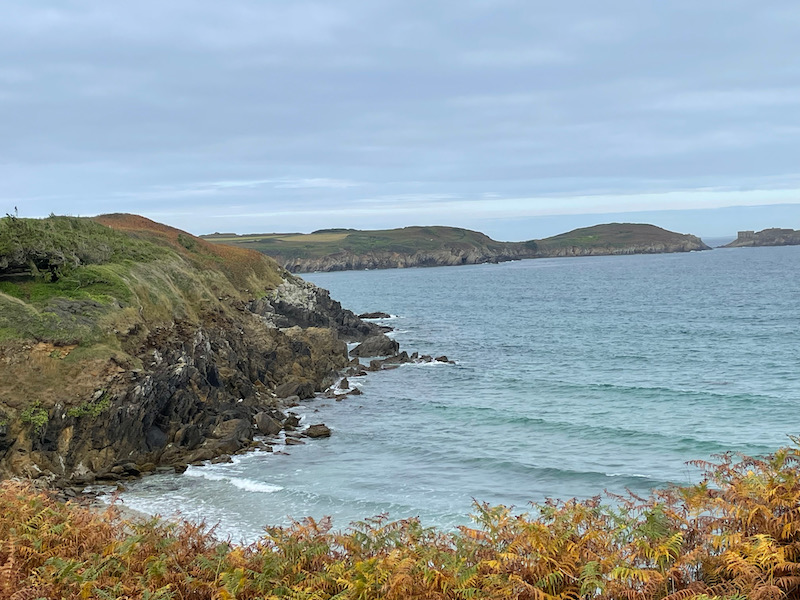
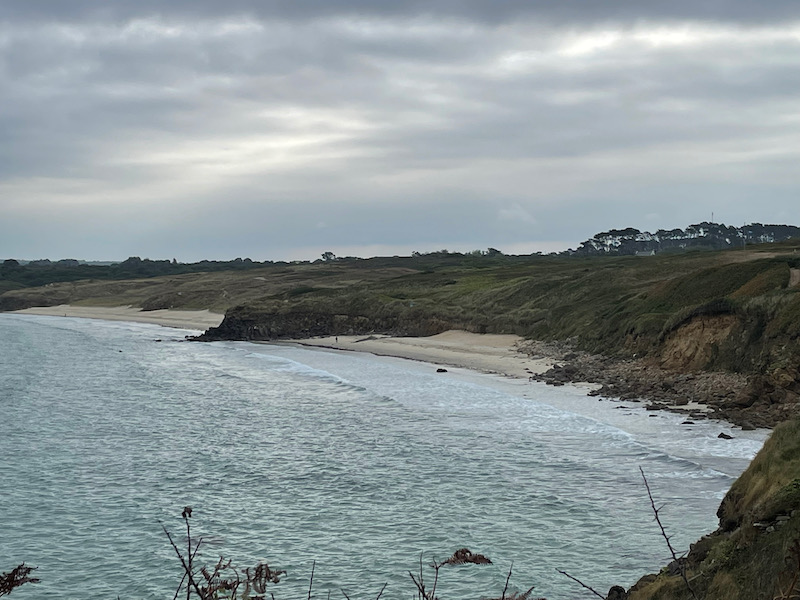
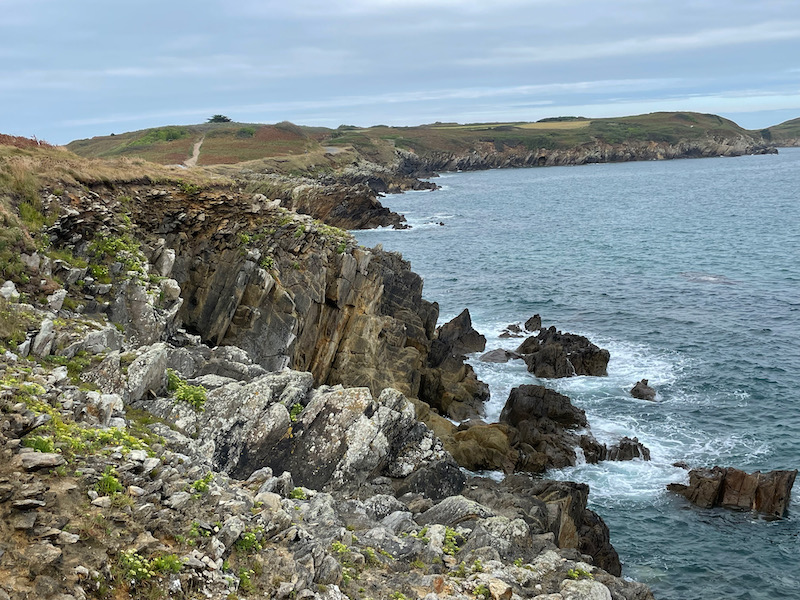
Lucy always enjoys the beach, especially when we can throw the ball with her.
Here are a few nice views from the Presqu'ile, over the La Ria river. The really nice old building with the turret is La Maison des Seigneurs, which is now a vacation rental.
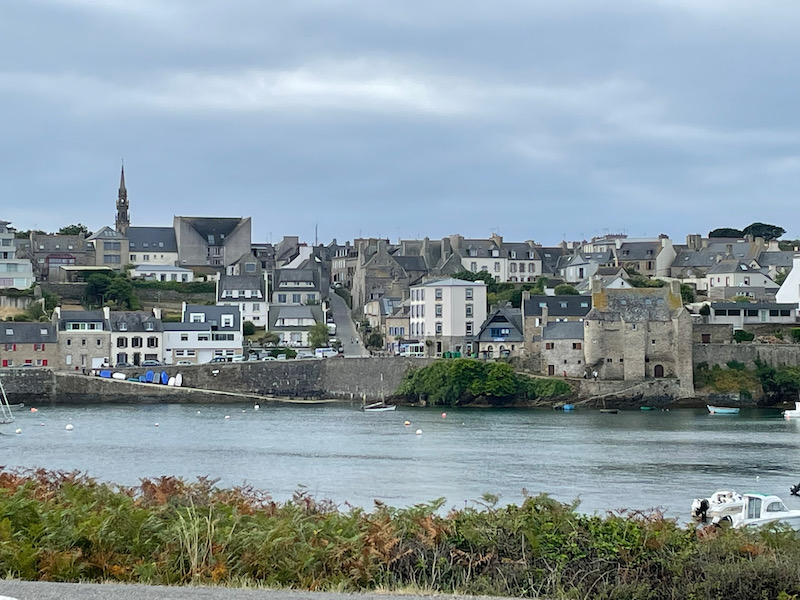
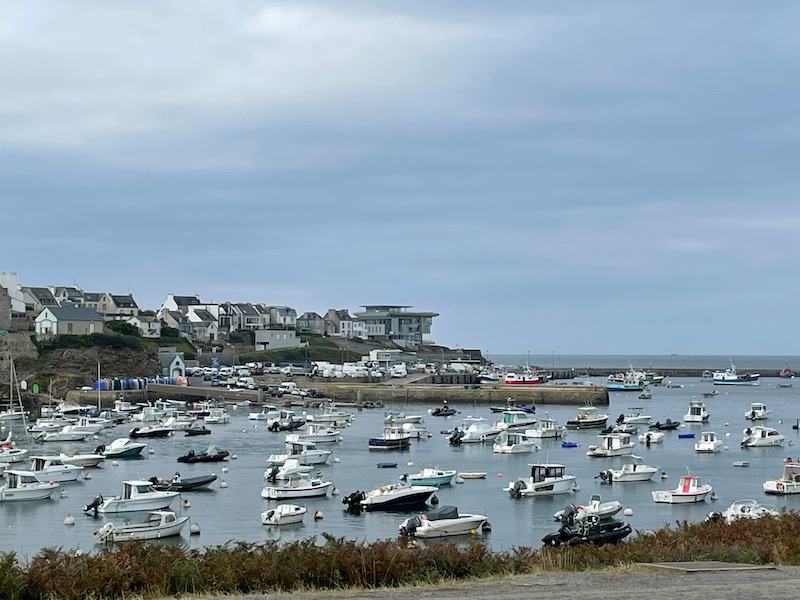
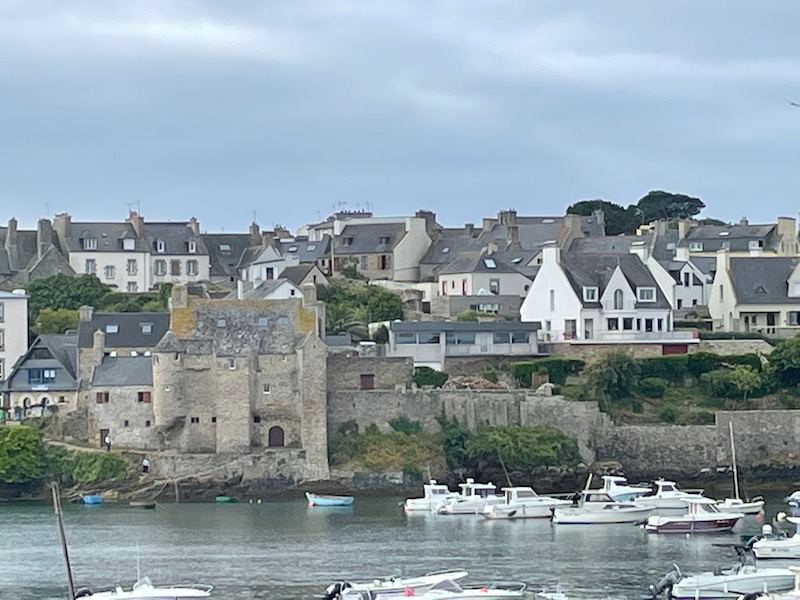
This is the last house before the bridge, and it has a really nice old gateway. The bridge, called the Pile du Croae, is a pedestrian bridge that crosses the La Ria. The office of tourism had recommended that we park on the Presqu'ile and walk across the bridge since parking in the town is quite difficult.
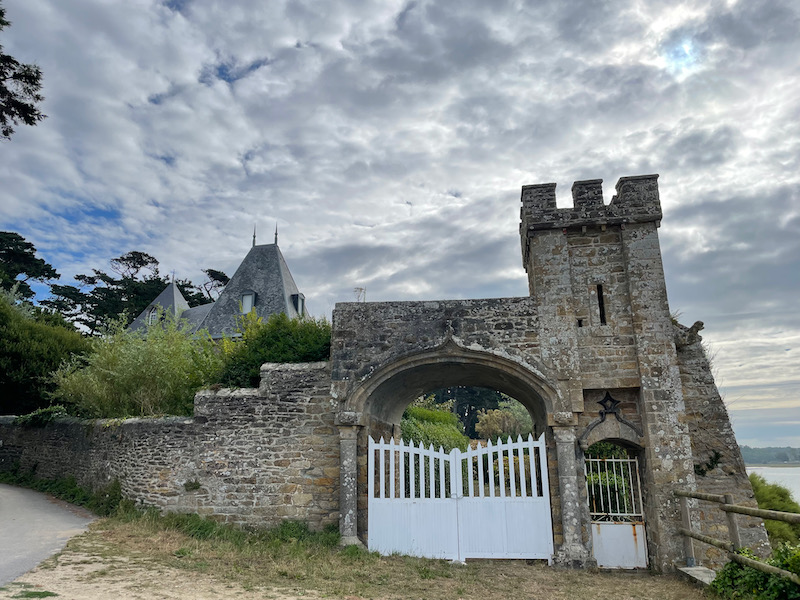
A general picture of the main old part of town with a few really nice old buildings, including the crêperie where we had lunch.
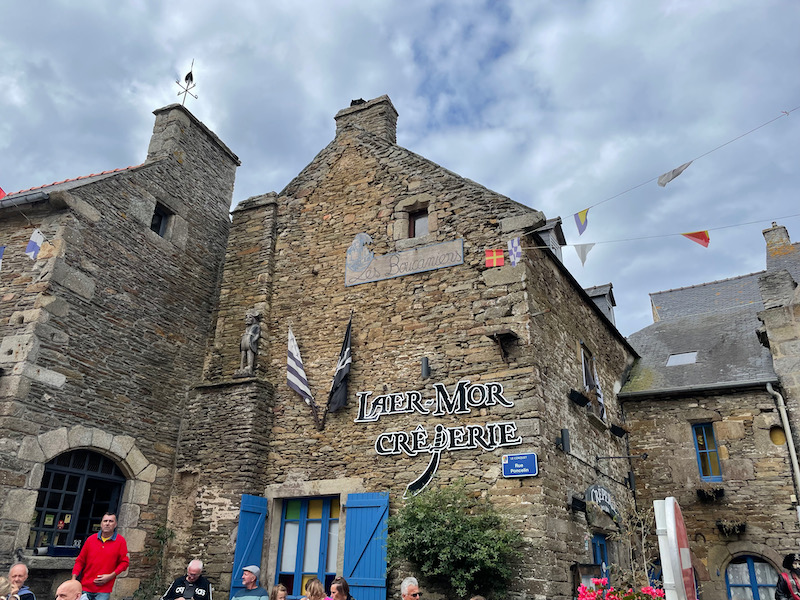
The Eglise Sainte-Croix is unusual: with its Gothic look, the old statues that adorn its facade, its 18th century tomb and its large flamboyant stained glass window, you would think that it is an old church. But in fact, it was built in the middle of the 19th century. The date of construction, 1856, appears above the entrance gate. The spire of the bell tower was rebuilt in the 1950's after being damaged in 1944. It is actually a church from the nearby town of Lochrist which was dismantled and rebuilt (with some changes) here.
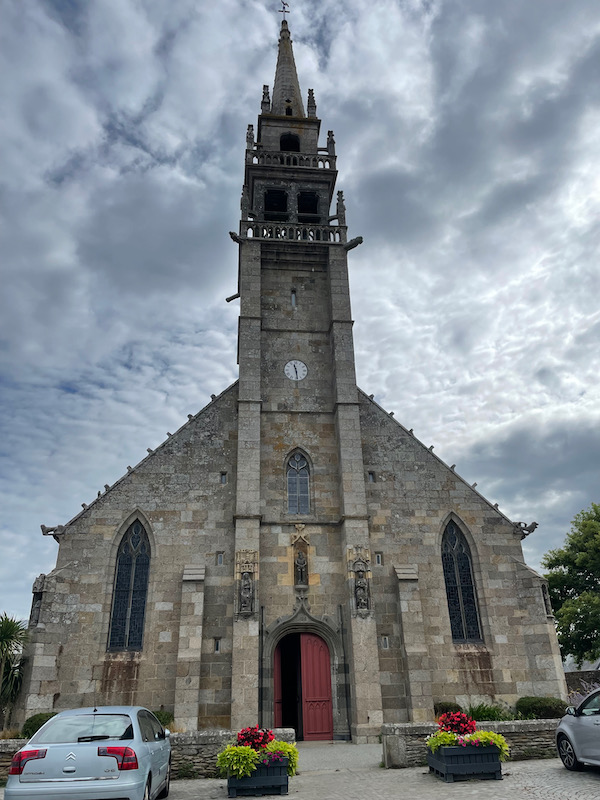
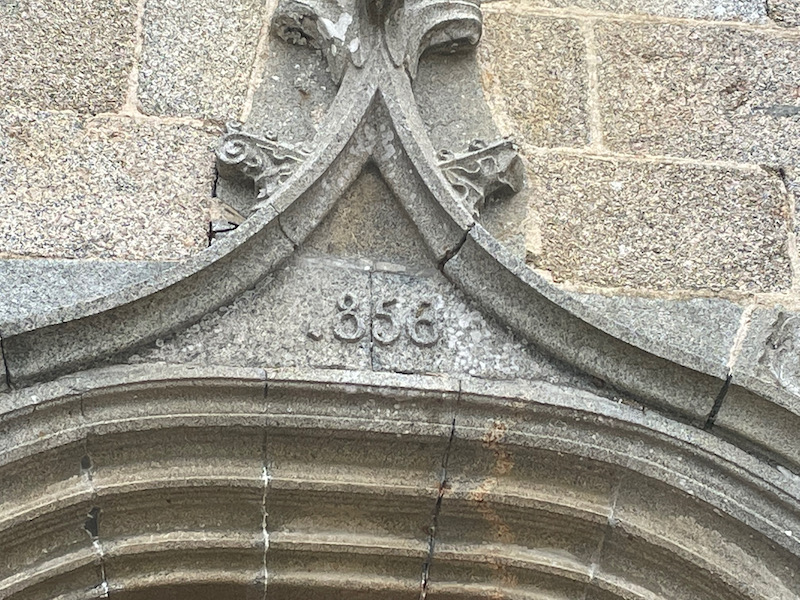
There are several statues on the outside, and I took pictures of two of them. The first shows a veiled woman, holding something, but then you can also see the bottom half of a person, who seems to be naked and kneeling, perhaps praying. The second is St John with an eagle holding his inkwell in its beak.
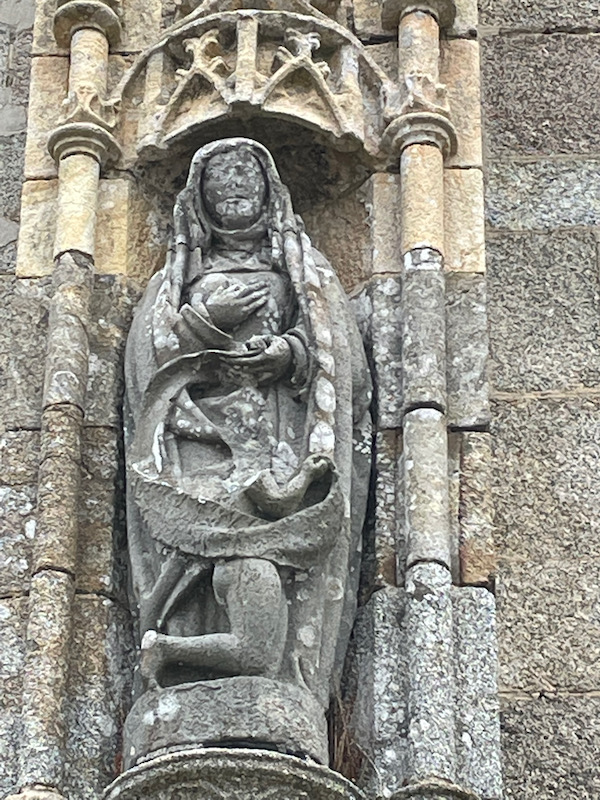
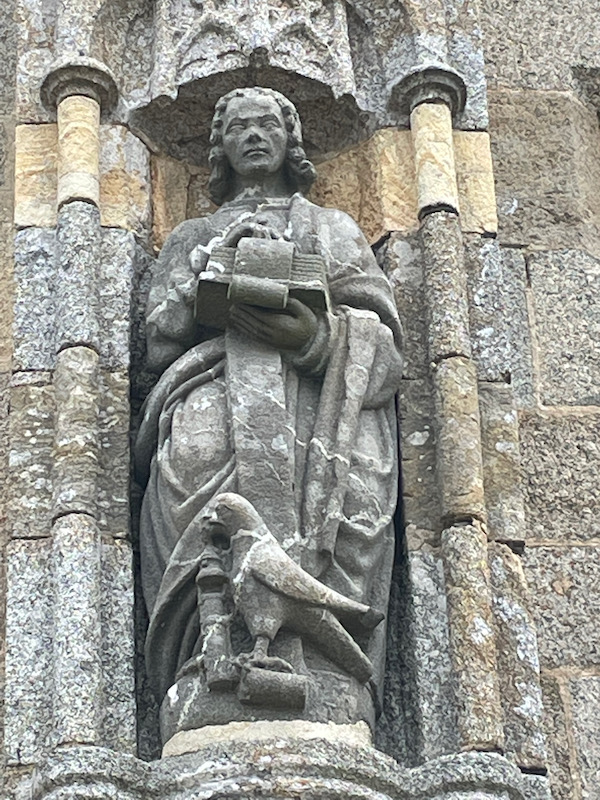
The very classical plan of the church make the visitor believe that the nave is nothing exceptional. But there are a few interesting items, like the fact that decorative sculpted elements from the old vaults of the church of the nearby town have been incorporated into the side walls.
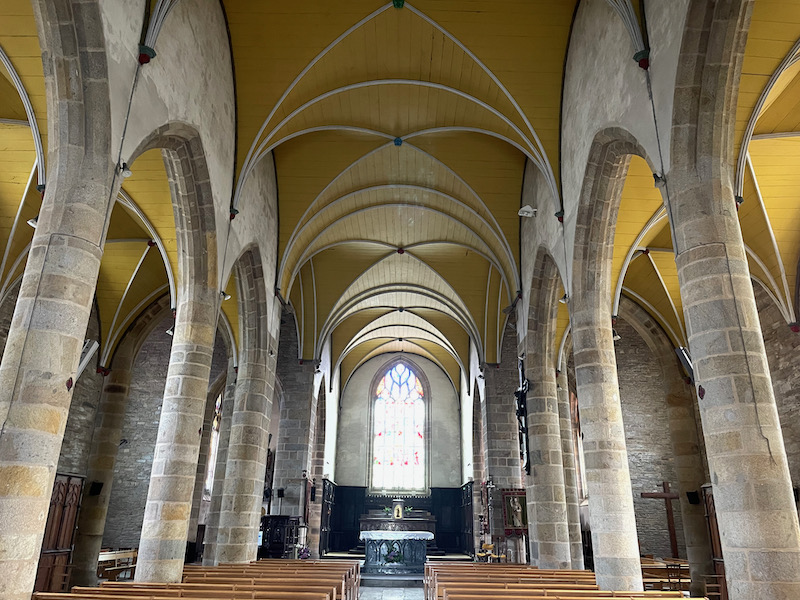
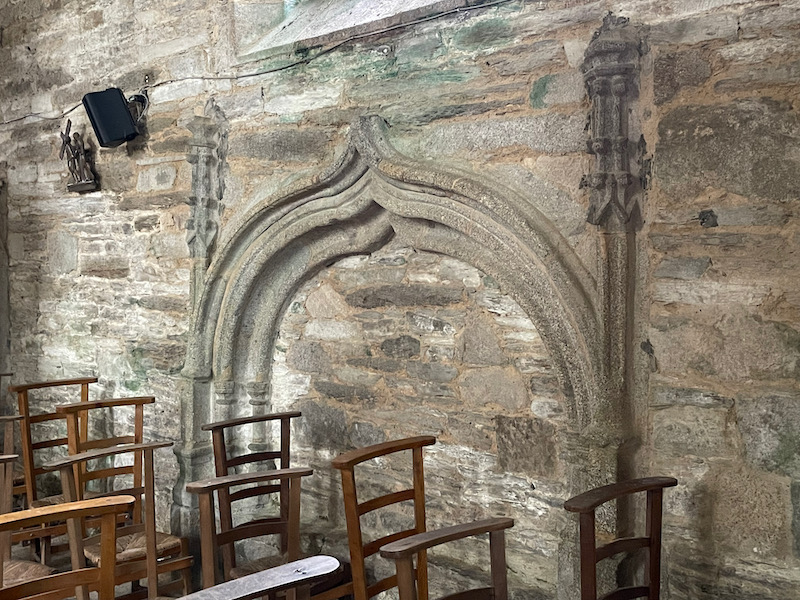
The stained-glass windows come for 3 different periods. There is one large window in the main choir which dates from the 16th century. The window was dismantled, moved from Lochrist, and then reassembled in the church here. It was shattered during the bombardment of 1944 and but thanks to it being classified as a Historical Monument in 1938, it was possible to restore the window, filling of the voids in such a way that it does not interfere with the understanding of the whole.
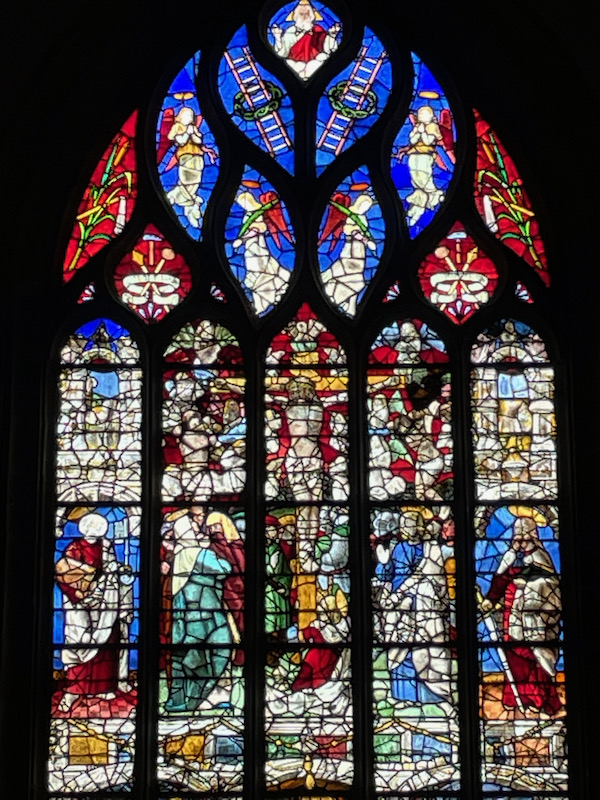
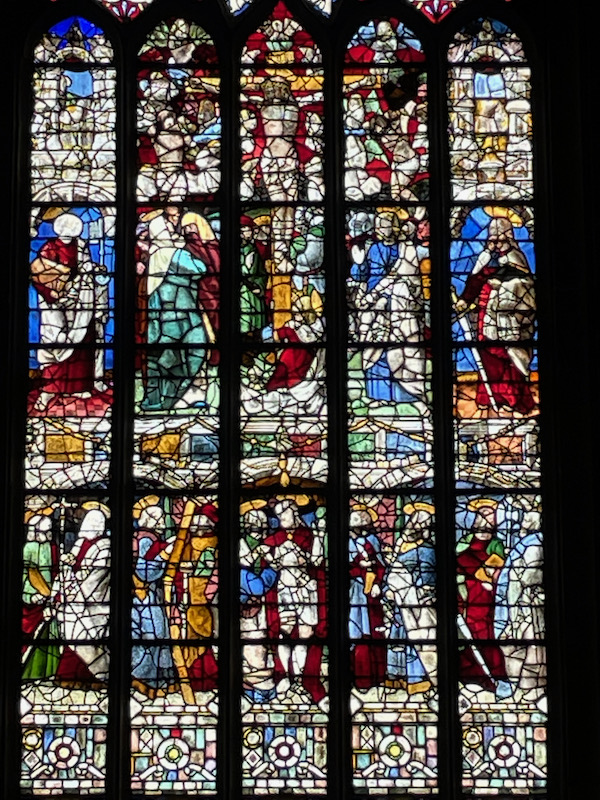
Second period glass, made in the 1903's, shows episodes in the life of Dom Michel Le Nobletz with a title below. The first, "MIKEL GANT AN DUD AR VOR" shows Michel with the seafarers. Next is "MIKEL A RO DILHAD D'AR BEORIEN", showing Michel giveing clothes to the poor. The last one, "MIKEL A ZISKUEZ EUR CROAZ TAN", representing Michel showing a fiery cross.
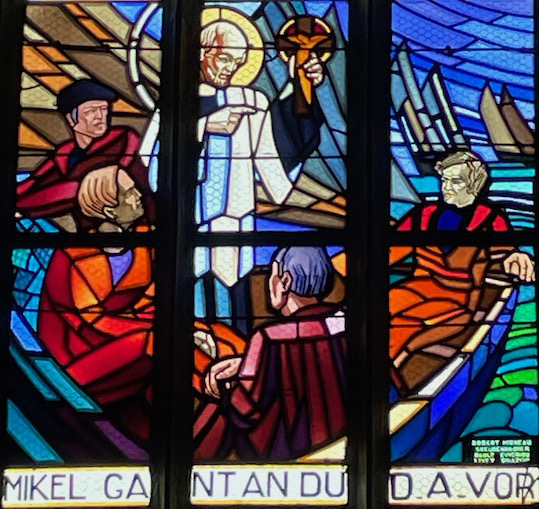
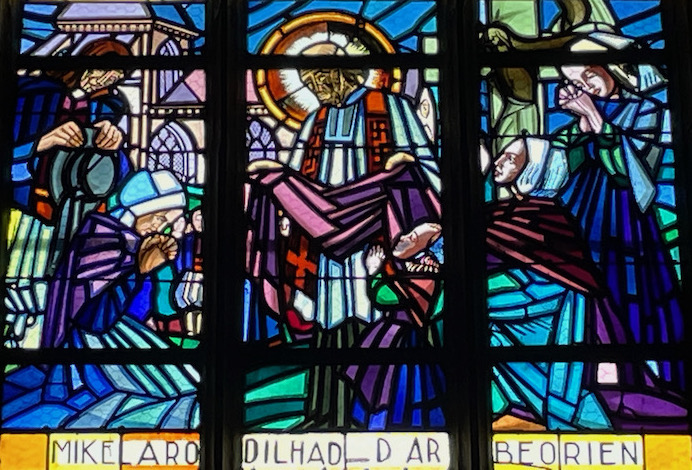
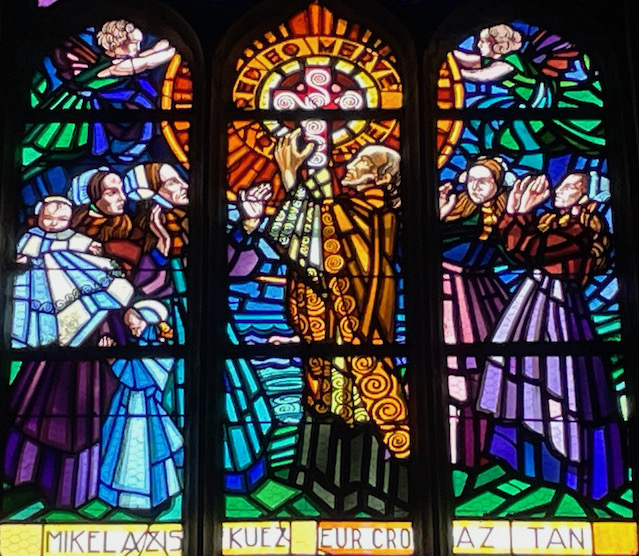
Third period glass, in the nave, can be easily noticed by their modernity and contrast with the previous ones. Produced in the 1960's and 1970's, they represent the great figures of the Church. This one, for example, was installed in 1971 and shows Joan of Arc
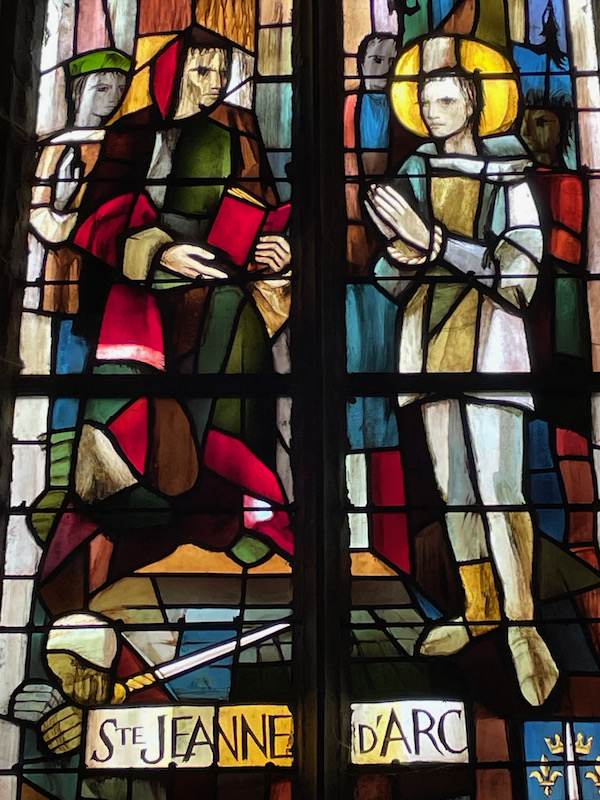
There is a highly-carved altar and a statue of Dom Michel Le Nobletz. His tomb is here.
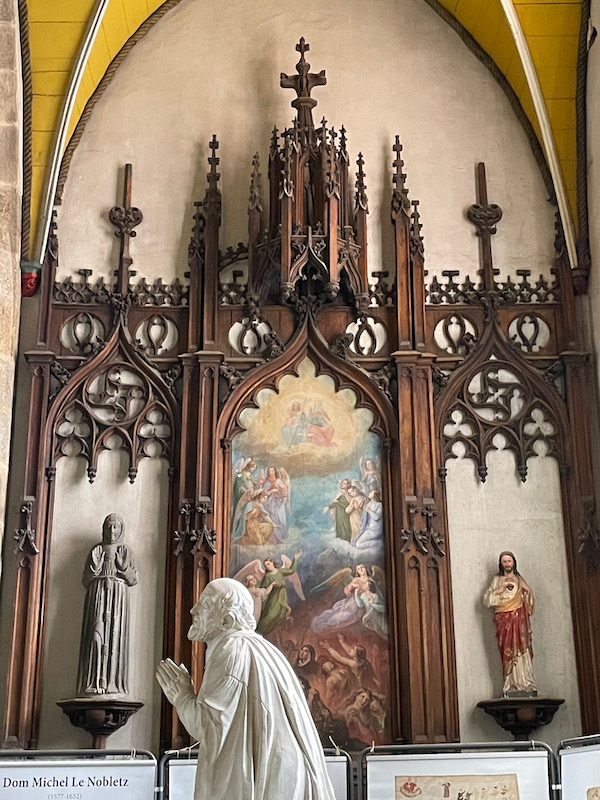
This is the tiny Notre-Dame-de-Bon-Secours chapel, also called the Chapel of Michael Le Nobletz. He was a priest from a neighboring village who was nicknamed "the mad priest" because of his unusual practices. Inside this little chapel is an interesting map called "The Mirror of the World". There is a little story within it, with a character moving from one area to another, and the most interesting part is that it shows the clothes that were worn in 17th century Brittany. The chapel itself is small and not highly decorated, but it does have a nice stained-glass window of the priest.
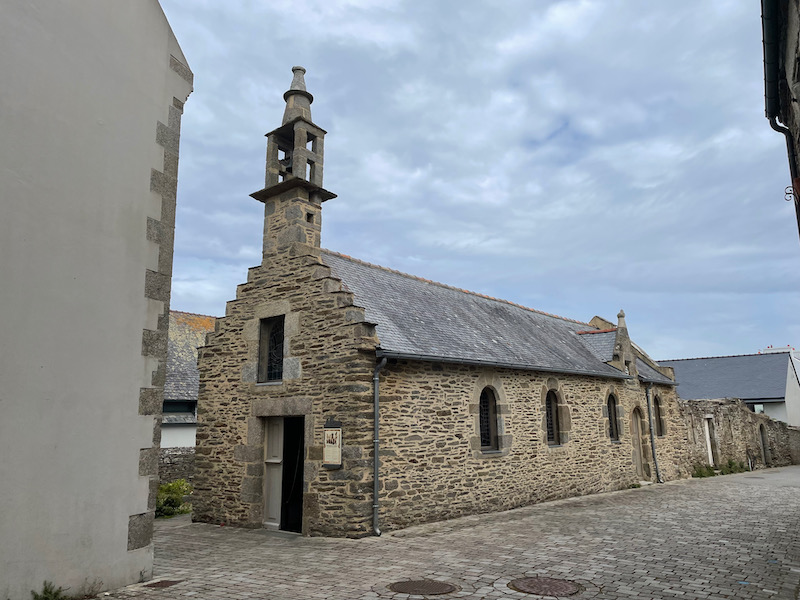
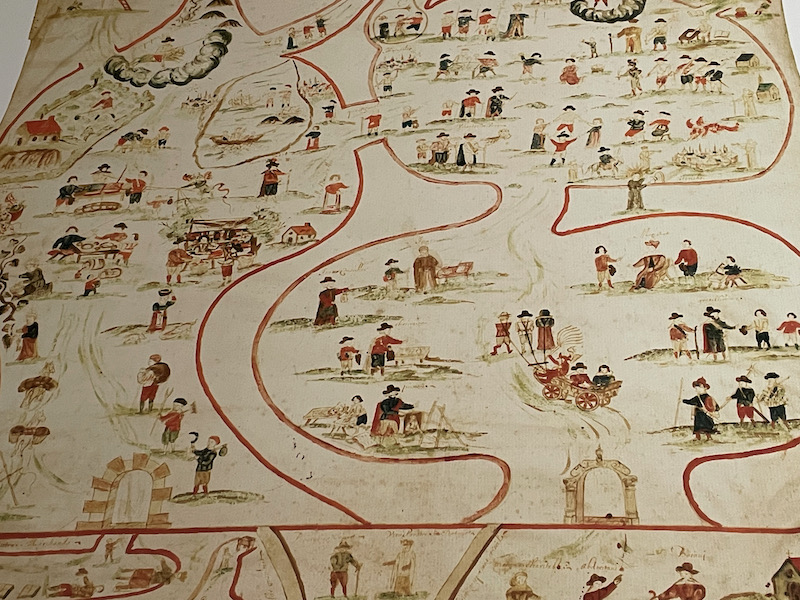
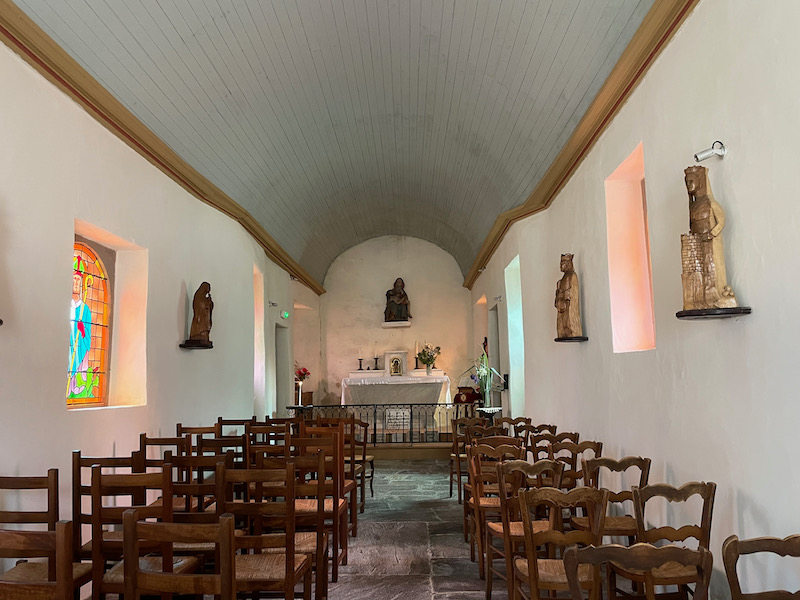
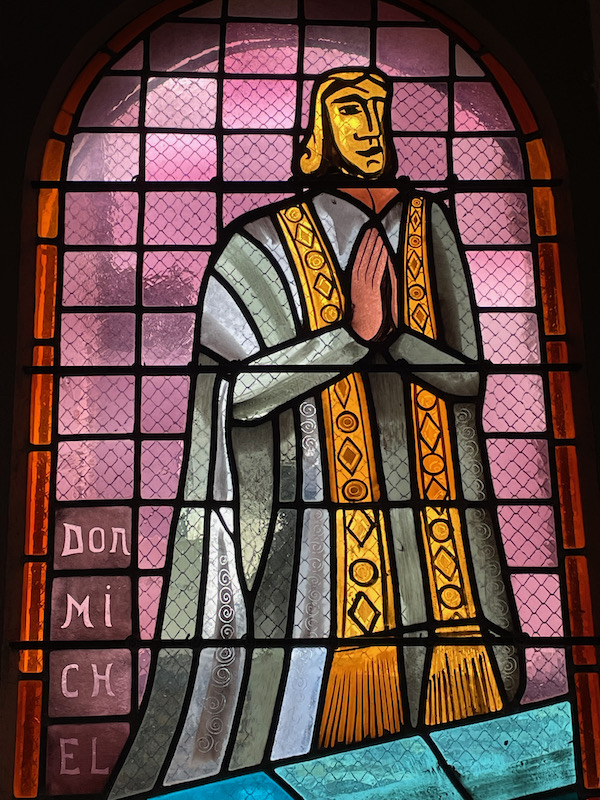
Fishing is a big industry here, and is one of the top French ports for shellfish. In 2001, the boats unloaded over 1,000 tons of shellfish (including 12 tons of scallops) and 600 tons of fish.
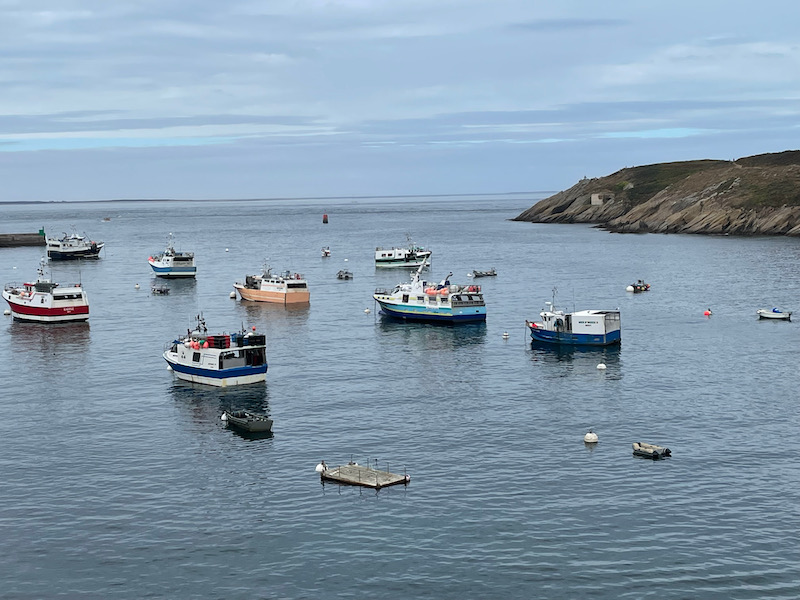
There was an interesting panel of information. The town is 15 miles away from Brest and you can get here in 30 minutes by car. Sometimes I find it funny when they talk about people long ago who lived in Brest having a "country home" in Le Conquet. Why? Because it is only 15 miles away ... I would think they would want to have something further away. But that is now ... back then, in the 19th century, you could take a stagecoach called the "Swallow" and arrive 3 hours later. In 1903, an electric tram took over and reduced the trip to only an hour. This made Le Conquet a nice spot for a "summer home" on the coast. The tram only lasted until 1932, when buses and cars were on the rise.